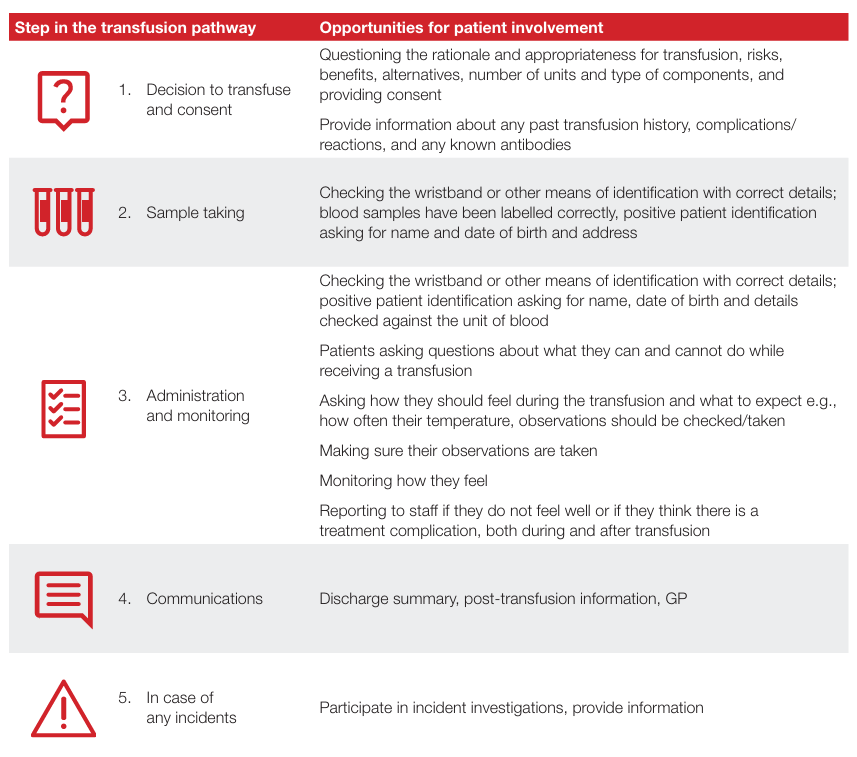SHOT have created a list of opportunities for patients to play an active role in their transfusion
There are several steps along the transfusion pathway where patient involvement can increase transfusion safety.

Step 1. Decision to transfuse and consent
- Questioning the rationale and appropriateness for transfusion, risks, benefits, alternatives, number of units and type of components, and providing consent
- Provide information about any past transfusion history, complications/reactions, and any known antibodies
Step 2. Sample taking
- Checking the wristband or other means of identification with correct details; blood samples have been labelled correctly, positive patient identification asking for name and date of birth and address
Step 3. Administration and during patient monitoring
- Asking how they should feel during the transfusion and what to expect e.g., how often their temperature, observations should be checked/taken
- Making sure their observations are taken
- Monitoring how they feel
- Reporting to staff if they do not feel well or if they think there is a treatment complication, both during and after transfusion
Step 4. Communications
- Discharge summary, post-transfusion information, GP
Step 5. In case of any incidents
- Participate in incident investigations, provide information
A graphic from SHOT that shows the points when you, as a transfusion recipient, can get involved in the process.
